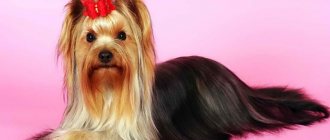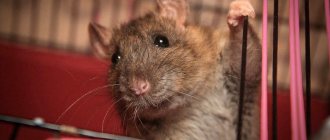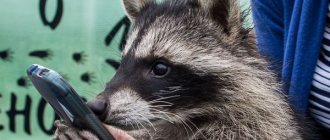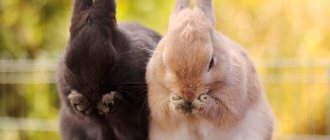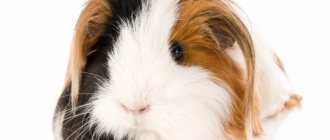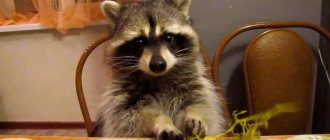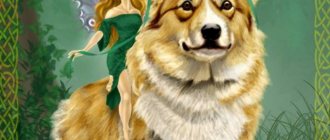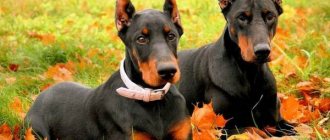| Origin | Russia |
| Usage | universal hunting dog, companion |
| Color | plain white, two-tone, reddish-brown of any shades, grey, fawn |
| Dimensions | 51-62 cm, 19-22 kg |
| Lifespan | 12 years |
The West Siberian Laika is the pride of Russian cynology. Only in harsh Siberia could such a hardy, reckless, sensible, people-loving hunting dog be born. It is not surprising that the breed is the most common among huskies.
Origin story
The West Siberian Laika (WSL) originated in the forests of Northeastern and Western Siberia. The origin of the breed is closely related to the indigenous population of the Khanty-Mansiysk Autonomous Okrug. Since the times of Tsarist Russia, taiga hunters have crossed outsider wolves and used their descendants for hunting.
The result was a hardy, strong breed with a strong hunting instinct. It was divided into 2 types depending on the region of breeding:
- Vogulskaya laika or Mansiyskaya;
- Ostyak, also Khanty Laika.
The Russian Siberian Laika breed has 4 factory and 3 native varieties. ZSLs differ from other types in their greater endurance, taller stature, and focus on people.
The first description of the breed was published in 1925. At that time, the classification of Russian huskies was confusing, and the Mansi and Khanty representatives were divided into separate subspecies.
In 1947, the varieties were combined, and by order of I. Stalin, breeding of huskies began. The breed was bred in more than 50 nurseries in Russia. The best breeding centers were located in the Sverdlovsk, Moscow, Novosibirsk, and Perm regions.
Breeders created strong dogs devoid of genetic defects. To do this, they used outcrossing - crossing pets of the same type without family ties. The first sires were Grozny, his grandchildren Norai, Taezhny, Muks in the Sverdlovsk breeding line, and Mishka, Ulf, Sever in the Moscow line.
Over the course of ten years, the breed type was fully formed, while the breeders retained the original features of the Mansi and Khanty dogs. In addition to their blood, West Siberian huskies inherited the genotypes of Nenets, Ural, Zyryansky huskies, German shepherds and dingoes.
A new description dividing dogs according to geography was approved in 1954. West Siberian huskies began to conquer Europe in the 60-70s. And 10 years later, in 1980, the International Canine Federation (FCI) recognized the breed and adopted a standard.
The history of the appearance and development of the West Siberian Laika
The origins of this amazing breed of dog originate in the territories of modern Siberia and the Urals, where the local population has long used dogs as helpers.
Dogs carried cargo, guarded livestock and, of course, accompanied people on hunts.
The first Laikas of the Vogul (Mansi) and Ostyak (Khanty) type, which were used as hunters and companions, became the progenitors of the West Siberian Laika.
Photo 7. West Siberian huskies appeared on the territory of modern Urals and Siberia
Considering the requirements that were placed on dogs at that time (endurance, obedience, courage), the selection was carried out according to the “Spartan” system, when the aborigines simply got rid of lazy and disobedient dogs.
This selection helped to create a universal assistant, whose working qualities are still so valued by hunters all over the world.
When purposefully breeding the breed, the method of selecting similar individuals of different bloodlines was actively used.
This influenced the development of a very wide gene pool of West Siberian huskies and made the breed completely independent and “pure”.
Photo 9. The West Siberian Laika is graceful
The period of formation of the breed ended in the 1970s.
The main centers for work on the development of the West Siberian Laika were Sverdlovsk (now Yekaterinburg), Perm, Leningrad (St. Petersburg), Novosibirsk and a number of other cities.
Back in 1925, the classification of huskies was completely different. Breeders distinguished dogs according to those tribes that stood at the very origins of the emergence of one or another variety of husky: Ostyak, Votyak, Zyryansk, Karelian and Vogul.
This led to the fact that by the mid-1930s, as many as 5 Laika standards were formed - Finno-Karelian, Karelian, Khanty, Mansi and Komi.
In the post-war period, the classification of huskies became widespread, based on the geographical principles of the origin of these dogs.
This was the reason for the creation of new temporary standards - the Karelian-Finnish, Russian-European, West Siberian and East Siberian types of huskies.
Soon the West Siberian and East Siberian varieties of huskies were recognized by the International Cynological Federation.
Video review of the West Siberian Laika breed:
Standard requirements
The West Siberian Laika is a medium-sized breed. Its exterior is powerful, durable, but without massiveness. The dog moves easily, when walking - at a short trot, when running - at a trot combined with a gallop.
Males are more courageous, larger and rougher than females. They also have longer hair at the withers. The difference is visible to the naked eye in the photographs.
| Parameter | FCI breed standard No. 306 dated October 13, 2010 |
| Height | 55-62 cm – male, 51-58 cm – female. |
| Weight | 19-22 kg. |
| Body type | Strong, without meatiness or roughness. The skin is thick, without folds or looseness. |
| Frame | Stretched, longer than the height at the withers, more elongated in bitches. The back is straight, slightly inclined from the withers to the croup (the difference in height is 1-2 cm). The chest is deep and wide, in contact with the elbows, the stomach is lean, the underline is smooth. |
| Head | Dry, with pronounced muscles. Elongated, wedge-shaped. The length of the skull is half its width. |
| Nose | Medium size. The lobe is black; in white dogs, brown pigmentation is allowed. |
| Ears | Small, V-shaped, standing high. The tips are pointed. |
| Eyes | Oval, deep set. The iris is brown, matching the color. |
| Bite | Scissor-shaped. |
| Tail | Rolled into a ring, thrown over the back - straight or slightly to one side. Long - if straightened, it will reach the hock joints. |
| Limbs | Straight, parallel, with defined muscles. Set wide apart, elbows point back and touch the chest. The length of the front legs from the ground to the elbow exceeds ½ of the height at the withers. |
| Paws | Oval, gathered into a ball, the middle fingers protrude slightly forward. The hind legs are smaller than the front legs. |
| Wool | The guard hair is coarse, straight, dense, the undercoat is abundant and soft. A collar is formed on the neck and shoulders, sideburns on the cheekbones, and panties on the hips. At the back of the limbs and at the bottom of the tail the hair is longer, but without fringes; on the head it is short and dense. The hairs between the toes are tough and protect the pads from damage. |
| Color | Acceptable colors: pure white, brown-red of any shade or in combination with the main gray or red color, deer (red), two-color - spots of any of the indicated colors are located on a white background. |
Disqualifying faults
The dog is removed from the ring for:
- psychological deviations - cowardice, aggression towards people;
- bite other than scissor bite;
- speckled iris, cloudy cornea;
- drooping or not fully erect ears;
- saber-shaped tail, shortened, hanging, with dewlaps;
- excessively short or long hair;
- albinism, brown, blue, brindle colors.
ZSLs are also fined for other shortcomings. The degree of punishment is determined based on the severity of the defect and its impact on the dog’s health:
- light pigmentation of eyelids, nose, lips;
- deviations from the permissible height by 2 cm up or down;
- sagging or arched back;
- curly, wavy, soft wool;
- black color - pure or in combination with white;
- cryptorchidism.
Judges closely evaluate the size of West Siberian huskies. There is a tendency for the breed to become larger. Thus, the standard was repeatedly revised, and the growth parameters changed: until 1966, the lower height limit for males was 52 cm (today 54 cm), for females - 50 cm (now 51 cm). But many males go even beyond these boundaries - there are dogs from 63 to 69 cm at the withers.
Breed differences between West Siberian huskies
Although the West Siberian huskies of the Mansi and Khanty varieties are combined into one breed and are similar to each other in hunting manners, character and origin, cynologists still distinguish 2 types. They really differ in appearance.
The Mansi type has:
- narrow head;
- long, elongated muzzle;
- smooth transition from head to muzzle;
- lean, lightweight physique;
- round eyes;
- hare-type paws.
The Khanty type is different:
- shorter muzzle;
- pronounced stop;
- wide forehead;
- abundant decorating collar on the neck and shoulders;
- slanted eyes;
- a well-built, strong constitution;
- "cat's" paws.
Both types of Western Laika are of breeding value. Preservation of varieties and improvement of their best breed traits are the priority tasks of breeders.
Appearance
West Siberian Laikas are dogs of average or above average height, with a strong, dry constitution. The height at the withers of males is 55-62 cm, of females 51-58 cm. The height at the rump in males is 1-2 cm lower than the height at the withers, in females it is equal to or lower by 1 cm.
The head is dry, sharp wedge shaped, the skull is wide. The muzzle is elongated, sharp, but not too narrow, widening slightly in the area of the fangs. The stop is pronounced, but not sharply. The top line of the forehead and muzzle are parallel. The occipital protuberance and parietal crest are clearly visible. Lips fit tightly and are dry. The ears are set high, mobile, shaped like an elongated triangle, erect . The eyes are small oval or almond-shaped with a sharply oblique cut, set a little deeper than those of other huskies, the color is brown regardless of color.
The teeth are strong, white, scissor bite.
The bones are strong. The wrist girth in males is 11-12 cm, in females 10-12 cm. The neck is dry, oval in cross-section. The withers are well defined, the back is straight and wide. The loin is slightly convex and short. The croup is moderately long, slightly sloping. The chest is deep and wide, quite long, and ovoid in cross-section. The transition from the chest to the tucked in belly is weakly expressed. The limbs are high, lean, muscular, straight and parallel when viewed from the rear and front. The paws are oval, with toes pressed tightly together, the middle ones are slightly longer than the outer ones. It is not advisable to leave dewclaws and they are often removed immediately after birth. The tail is thrown in a ring over the back or lies on its side, it can also fall like a sickle, but in this case it must touch the back.
When extended, it should reach the hock joint.
The skin is dense, elastic, and does not form folds. The coat is double, formed by a hard, straight coat and a soft, thick undercoat, which raises the coat and gives the impression of an evenly lushly dressed dog.
The hair on the ears and head is slightly shorter. It forms a collar on the neck and shoulders, and sideburns when it meets the fur behind the cheekbones. Slightly elongated at the withers, especially in males. The legs are covered with short hair on the front, slightly longer on the back. Feathers form on the hind legs, with brushes between them. The tail is well feathered without dewlap. The color is white, red, gray and brown of all shades, as well as zonal (wolf) and piebald.
Temperament
The character of West Siberian huskies is complex. Their behavior and manners are similar to their closest relatives - wolves. The only difference is friendliness and dependence on the person.
The West Siberian Laika is an independent dog. She always evaluates the situation: in difficult circumstances, the pet would rather act as her instincts dictate than listen to her owner’s commands.
ZSL has very strong instincts. This makes dogs natural hunters who can survive for weeks in the deep forest.
At the same time, West Siberian huskies are more attached to people than other breeds in this group. They need their owner's attention and approval. They are open, active, and temperamental.
Dogs love to communicate: barking for them is not just a way of expressing emotions, but a means of communication. Rarely does a minute in the company of pets go by without ringing, loud barking.
Character and behavior
The West Siberian Laika is a strong and courageous dog with a balanced psyche and a friendly but firm character. She quickly gets used to people and demonstrates an equally equal attitude towards all members of the owner's family. The West Siberian Laika respects the laws of the pack and adheres to hierarchy. The dog considers its owner a comrade and mentor, so it will never compete with him for leadership.
She treats children with benevolent patronage and will never allow herself to be pulled by the ears or pulled by the tail.
In ordinary life, the West Siberian Laika does not show aggression towards strangers and is loyal to other pets, especially if it has known them since puppyhood. But if the dog finds itself in the forest, it will immediately turn into a dexterous and ruthless hunter. The dog clings tightly to its prey and does not open its jaws until it hears the owner's command.
Application
The West Siberian Laika is a universal hunter. She can spend hours following a squirrel in the dense crowns of trees and bravely fight a bear.
With the help of these hardy dogs they go to:
- wild boars, deer, roe deer, elk;
- bears;
- fur animals;
- game birds;
- burrowing animals.
Dogs are excellent at tracking, chasing and holding any game. The dogs have developed lower and upper senses, they are able to follow the old trail, and are equally good at single, pair, and roundup hunting.
The West Siberian Laika has good sociable qualities. But this does not mean that the pet will happily walk around at picnics and carry balls like a golden retriever. First of all, he is a hunter. And by partner traits we mean a focus on a person. Among other Siberian huskies, ZS is the least adventurous. She does not lose contact with her owner during the hunt, and is distracted from her prey on command.
The characteristics of the breed include expressed anger towards the beast, but not towards humans. The West Siberian Laika is wary of strangers, but does not care about property. If she copes with the role of a security guard with varying degrees of success, then she will not become a security guard.
Feeding
“We are what we eat.” It is difficult to list all the diseases that can be caused by a poor, vitamin-free, monotonous diet - or, on the contrary, a diet oversaturated with fat, fast carbohydrates or certain micro- and macroelements. An animal that is fed incorrectly can get sick not only from diseases of the gastrointestinal tract. It will have problems with all body systems - from blood vessels to bones.
Dry food of the super premium and holistic classes is already balanced taking into account the needs of your animal (however, it is better to read the composition anyway). The packaging must indicate:
- the amount of proteins, fats and carbohydrates per 100 g of feed;
- ingredients included in the composition.
It is better if there is as little vegetable fat and ballast as “cornmeal” as possible, and more animal fat and real meat (for example, “dehydrated lamb meat”).
If you prefer to feed your animal natural food, you will have to independently monitor the balance of biologically active substances that your husky needs for a healthy life, and, if necessary, introduce fortified supplements (in consultation with your veterinarian).
natural diet should consist of half meat and offal and half fermented milk products (cottage cheese, yogurt, kefir). There is no need to give whole fresh milk: most adult animals are not able to digest lactose.
The third element of the diet is not taken into account in the total amount of food and is considered a food additive. These are vegetables and unsweetened fruits - a source of fiber necessary for the correct functioning of the husky's gastrointestinal tract. Their number should be approximately 10% of the rest of the menu. If the dog is categorically against carrots and apples (this is rare among huskies, but it happens), vegetables and fruits can be replaced with bran.
Socialization
It is impossible to house other animals in a house where huskies live. Dogs rarely get along with cats, and only if they grow up with them from puppyhood. However, they will not be friends with mustaches.
Other people's pets are legal prey for West Siberian huskies. They pursue them with passion. On walks, dogs are not allowed off a leash: they can kill a neighbor’s favorite cat or get lost while chasing a pigeon.
Relations with other breeds are tense and polite. But rarely does anyone risk having two West Siberian husky males. Every minute skirmishes and struggle for supremacy are guaranteed.
At the same time, pets are not dominant towards people. They view them favorably as intelligent but physically weak partners. Dogs form a tandem with humans, based on respect and cooperation.
West Siberian Laikas are reserved with children. They take the position of a patron and patiently endure pranks. But the child is not an authority for them; the pets will not obey him.
Breed standard
The West Siberian Laika dog is a medium-sized breed, although some experts classify it as large. The dog's physique is proportional, he is well built. It is believed that it was selected for many years. Ancient representatives of the breed were much larger than modern ones.
However, their massiveness deprived them of such an important skill necessary for hunting as agility. According to the standard, the weight of a normal representative of the breed should not exceed 20-23 kg. Some young females weigh 15-15 kg and this is not a deviation. The height of an average-sized individual is 58-60 cm.
It must be said that the above parameters are not so important for the judicial analysis of the West Siberian Laika. Experts evaluate this animal, first of all, by the harmony of its body parts, that is, they analyze how well it is built.
The dog's body is elongated. The neck is not long, has a barely noticeable bend. The ribs are not visible at all on the muscular, broad back. The withers are perfectly expressed. The chest is not wide, not protruding. On strong and symmetrically placed legs, the knee joints are well defined. The tail is ring-shaped, most often lies on the back, but can hang to the side.
The wedge-shaped head is slightly elongated. The transition to the muzzle is smooth. The dog's jaw is tightened, his lips are dry, his teeth are snow-white and strong. According to the standard, the bite of a purebred husky should be scissor-shaped.
His ears are triangular, have pointed corners, and erect. The nose is large, pigmented, often black. The look of the West Siberian Laika in the photo is expressive and interested. Her almond-shaped eyes are set shallowly. Their shade is black or dark brown.
All dogs bred in Siberia have a dense undercoat. It performs an important protective function of insulation. The animal is not afraid of frost and blizzard. The dog's fur grows straight, vertically in relation to his body, this gives the impression that he has a fluffy fur coat.
The dog's appearance is really bright and elegant. There are a lot of colors. Popular options:
- Pure white.
- Sandy brown.
- Pure brown.
- Ginger.
- Red-gray.
- Black and white.
Upbringing
The West Siberian Laika is a stubborn, wayward dog with its own opinion. She will certainly demonstrate all these qualities during training. And that's okay. Such traits are inherent in hunting breeds; they help dogs pursue prey and make independent decisions. Therefore, the training of the guard is conditional. The main thing is that the West Siberian Laika learns the commands of prohibition, calling and restraint. And at least with a delay she fulfilled them.
If you train a dog, it will stop assessing situations independently and will become completely dependent on its owner. The situation will play a cruel joke - when hunting, instead of trusting its instincts and acting instantly, the pet will wait for the person’s order. Due to such delays, at best, she will miss the prey, at worst, she will suffer from the claws, teeth and hooves of wild animals.
Keep in mind that hunting is dangerous for the dog itself. Therefore, trained dogs that have already been used as decoys are released into the forest.
The general training course (GTC) lasts up to 8-10 months. From the age of 5 months, West Siberian huskies are introduced to the forest, accustomed to its smells, sounds, and behavior in the thicket. The first training is carried out from 10-12 months.
It is important that the West Siberian Laika begins hunting before the age of 2 years. Otherwise, she won’t turn out to be a hunter.
Maintenance and care
There are pros and cons to keeping West Siberian Laikas. On the one hand, dogs are unpretentious. On the other hand, they need special conditions.
It is better to keep West Siberian Laikas in a spacious house away from civilization and closer to the forest. They are housed in an enclosure with an insulated kennel and a sun canopy. Dogs need space, freedom and the opportunity to constantly express their inexhaustible energy.
The West Siberian Laika adapts poorly to urban conditions. Still, she will get along in an apartment with a daily long walk and trips to nature at least once a week.
Hygiene
The West Siberian Laika is a native breed, its appearance is formed naturally. To maintain natural beauty, no special care is needed.
You will need:
- comb once a week, during molting - every day;
- bathe when soiled - approximately once a season;
- trim nails if they do not grind down on their own;
- examine your eyes and ears every day, clean them as they become dirty;
- After walks, check the paws - the pads are often injured.
They also take care of the cleanliness of the sleeping area. The lounger is washed every week, if instead there is a straw bedding, it is changed with the same frequency. Feces are removed from the enclosure every day, and it is disinfected once a month.
Walk
West Siberian huskies are endlessly hardy dogs. They are literally tireless - even after hours of hunting, a bowl of meat and a ten-minute break are enough for them to regain strength.
Therefore, you will have to walk with your pet often and a lot. She is taken outside at least twice a day for 1-1.5 hours. It is advisable to go to the forest at least once a week. And, of course, hunt with a dog.
The West Siberian Laika, due to insufficient physical activity, develops aggression, apathy, and destructive tendencies. The lack of exercise is also reflected in their appearance - without hunting and walking in the forest, dogs gain excess weight and lose hair.
Feeding
The West Siberian Laika has a digestive tract similar to that of wolves. Therefore, the best choice is natural food rather than ready-made food.
The menu consists of:
- lean meat - they do not give steaks or fillets, but trimmings, goulash, tenderloins with cartilage, sinew, etc.;
- offal: heart, udder, lungs, tripe, and occasionally liver;
- ocean fish;
- vegetables and fruits;
- fermented milk products;
- cereals - rice, buckwheat, wheat, barley, for puppies - oatmeal.
Meat, offal and fruit are given raw; fish must be boiled and boned. Vegetables are fed raw, boiled, stewed, cereals are boiled. The diet also periodically includes vegetable oils, bran, eggs, delicacies, and greens.
Natural nutrition is difficult to balance. Therefore, mineral and vitamin supplements must be administered. The veterinarian will tell you which ones a particular dog needs.
It is not advisable to feed your pet before going into the forest: a well-fed dog is not a hunter.
The West Siberian huskies have an “iron” stomach. They will digest anything, are able to go hungry for a long time and eat spoiled meat without any problems. But this does not mean that pets need to be fed substandard food. Yes, if a dog eats missing or inappropriate food a couple of times, nothing will happen to it. But systematic improper feeding will undermine the health of the hardiest dog.
Samoyed husky maintenance and care
We found out how many years husky dogs live. The West Siberian hunter is capable of living up to 17.5 years. And the Samoyed Laika has a maximum lifespan of 14 years.
How to care for a Samoyed and how to maintain it? The thick and snow-white fur confuses many. You will probably have to wash it every day. What kind of hunting is there? Yes, and you need to brush your pet regularly.
Representatives of the breed are combed twice a week. With heavy shedding - daily. But shedding occurs no more than twice a year. The combing process is as follows: a piece of hair is lifted with one hand, and with the other it is combed against the hair growth. And so on throughout the dog’s body. After the procedure, a metal comb is passed over the entire surface of the fur. Smooth it according to hair growth.
As for water procedures, it is difficult here in the fall, when there is mud and slush all around. The dog will have to wash its paws and belly. In normal dry weather, you can get by with dry shampoo.
The pet's fur is not trimmed. A fur coat is protection for a dog. The only thing is that you can shorten the fur a little on the pads of the paws and near the anus.
These dogs are prone to bloating, digestive problems, dysplasia and glaucoma. Regular veterinary examinations are necessary.
Health
The West Siberian Laika is an exceptionally healthy breed. She is genetically pure, without hereditary defects, and not susceptible to injury. All pathologies in dogs appear due to negligence or poor care.
When people say that their wounds “heal like dogs,” they mean West Siberian Laikas. Dogs easily endure severe injuries, and minor injuries heal within a few days.
Huskies live on average 12 years. But some dogs lived up to their 16th birthday.
Preventive measures
No matter how healthy the breed is, preventive measures are mandatory. Since the West Siberian Laika is often found in the forest and comes into contact with wild animals, you need to:
- treat the fur coat from blood-sucking parasites;
- from spring to autumn, use a collar against fleas, ticks, and lice;
- give deworming medications monthly;
- Be sure to vaccinate against rabies and canine distemper.
Of the remaining vaccines, serums are recommended for herpes, parvovirus, parainfluenza, adenovirus, leptospirosis, and hepatitis.
Development by months
ZSL puppies grow quickly. In just a year they reach the size of an adult dog. Therefore, the first 12 months are critical. At this time, it is necessary to monitor the height and weight of the dogs, make sure that they gain sufficient weight, but do not overeat.
The size of the puppies depends on their age. The table will help you navigate. If in doubt, you can look at the photos - they show what healthy, moderately well-fed kittens look like.
| Month | Males (weight in kg) | Bitches (weight in kg) | Males (height in cm) | Females (height in cm) |
| 1 | 2,25 | 2,05 | 29 | 25 |
| 2 | 5,5 | 4,5 | 37 | 34 |
| 3 | 8,7 | 7,5 | 43 | 40 |
| 4 | 11,4 | 10 | 48 | 46 |
| 5 | 15,2 | 13,2 | 53 | 50 |
| 6 | 16,2 | 15,3 | 56 | 53 |
| 7 | 17 | 16,2 | 58 | 54 |
| 8 | 18,9 | 17 | 59 | 55 |
| 9 | 19,9 | 19 | 60 | 55 |
| 10 | 20 | 19,5 | 60 | 56 |
| 11 | 20,8 | The weight of an adult husky does not change | 60 | 56 |
| 12 | 21,2 | 61 | 57 |
Average values are shown. The upper and lower limits of the norm vary - +/- 2 cm of height and 0.5-1 kg of weight are acceptable.
What you need to know before buying puppies
The West Siberian Laika is a working dog. She is bred for hunting, not for exhibitions. Therefore, the first piece of advice on how to choose a kitten is to find a breeder-hunter.
Hunters keep working stock. And since the puppy’s character and qualities depend on its parents, 90% of the traits of its mother and father will be passed on to it. Moreover, profit is not the first priority for such breeders, so they themselves will tell future owners if some of the dogs have shortcomings.
Initially, you can get acquainted with the litter by looking at photos of the puppies. But it’s better to finally decide which kitten to take after meeting the kids in person. Need to see:
- what the puppy and its parents look like;
- conditions for keeping dogs;
- permission for breeding, pedigrees, certificates of males and females about victories in exhibitions - the latter must be with working tests.
If this is your first hunting dog, it is worth taking with you someone familiar with the breed. He will appreciate the exterior and character of the carousing.
How much do puppies cost?
The price of the West Siberian Laika breed is low. Advertisements for sale can be found from 5-7 thousand rubles.
But such proposals are voiced by dog lovers. In breeding nurseries, a kitten costs more - from 10-15 thousand. And this is a pet class. A puppy of breeding class is sold for 20-30 thousand rubles. And for show class they will ask from 50,000 rubles.
The West Siberian Laika is a rare breed whose low price does not always mean that the dog is sick or has defects. Puppies are often sold by ordinary hunters who simply want to give away the puppies for a symbolic few thousand.
Nurseries
Those who do not want to take risks and buy a puppy from their own hands turn to breeding nurseries. The best breeders are considered to be owners from the breed’s small homeland – Siberia. Therefore, it is better to look for a West Siberian husky kitten there.
Below are the largest nurseries in the Russian Federation. On their websites you can see pedigrees, photos of West Siberian Laikas, and order a puppy:
- https://www.laiki-pitomnik.ru - breeder of Russian-European, East and West Siberian huskies in Moscow, sells kittens for 10-20 thousand rubles;
- https://laika-72.ru/services/ – Tyumen nursery “Siberian Hunt”, breeds ZSL, huskies, Russian-European huskies;
- https://bestlaika.ru/o-pitomnike: breeder from Omsk, in the Vereteno kennel there are over 50 breeding dogs, all of them working lines.
The West Siberian Laika was created for chasing and driving wild animals. Only hunters should get one - a dog that does not constantly realize its instincts will wither away.
